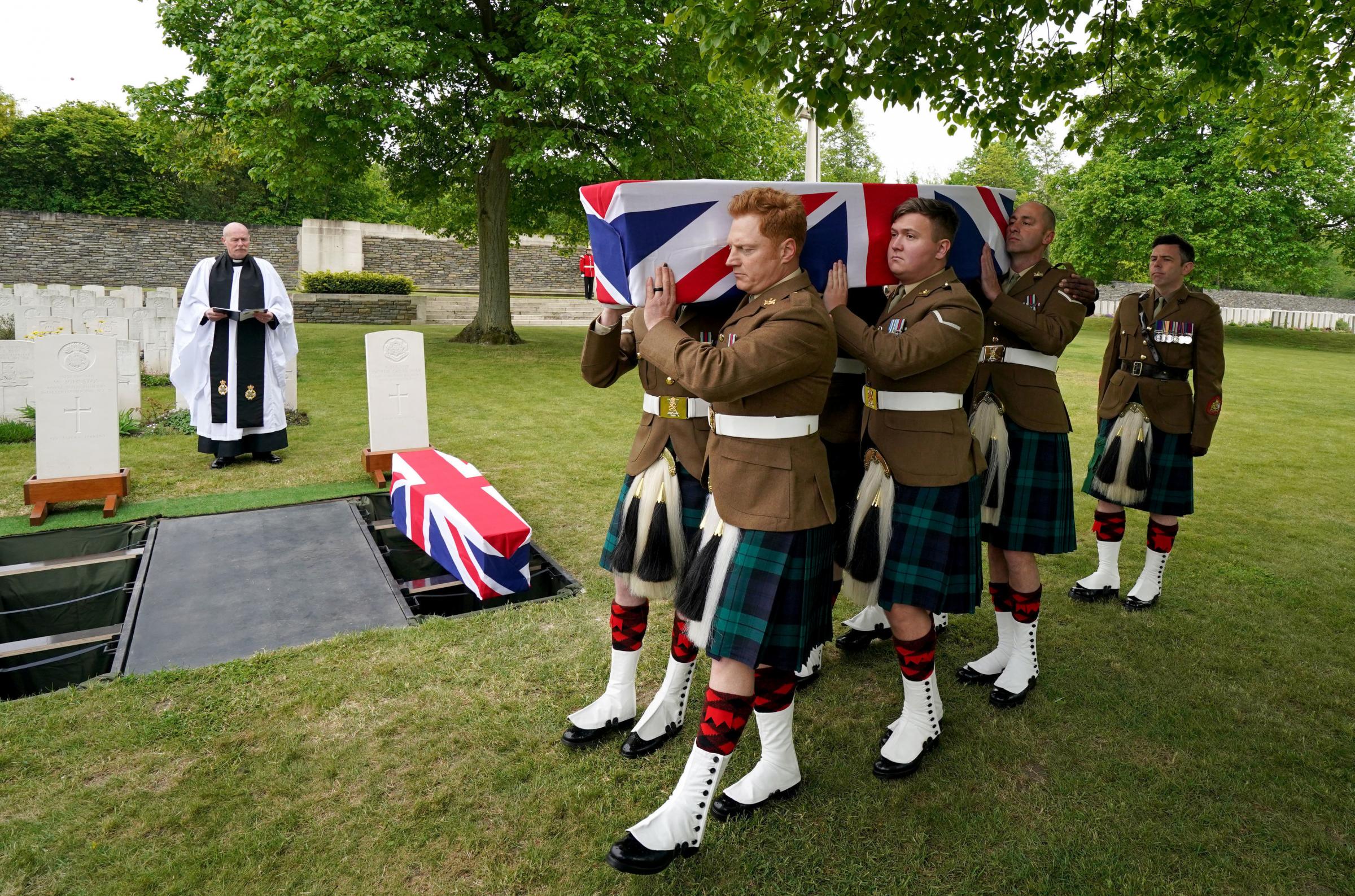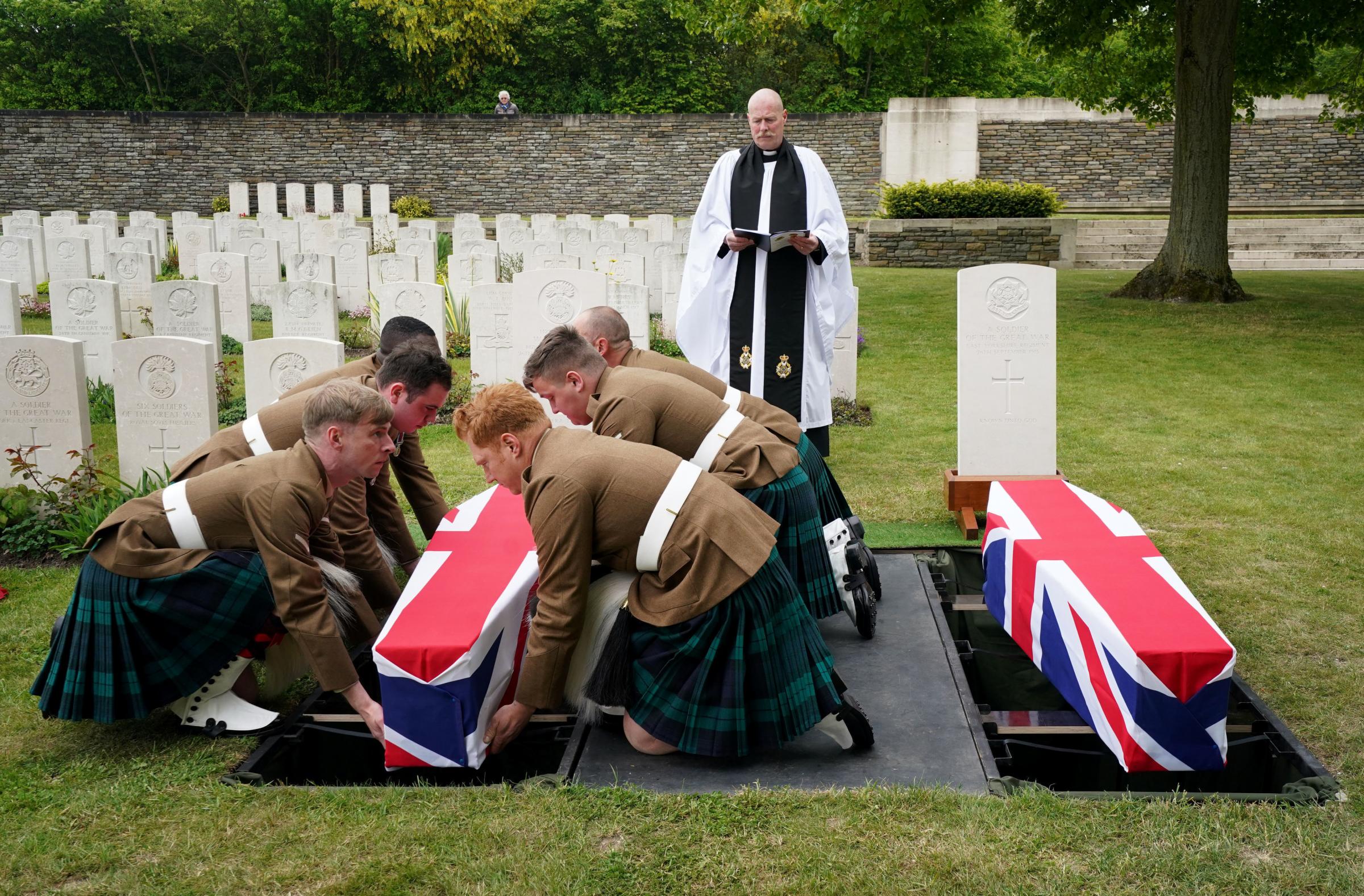
THE great-great-niece of a soldier who died in the Battle of Loos more than a century ago said she hoped more families would be able to see their war hero relatives identified and given the burial they deserve.
The remains of Private William Johnston, of the 7th Battalion Royal Scots Fusiliers, and another unidentified soldier were laid to rest yesterday at the Loos British Cemetery in France with full military honours.
Sharon Williamson, 48, Johnston’s great-great-niece, watched as members of the Royal Regiment of Scotland lowered his remains into their final resting place at the cemetery. She said: “Every Remembrance Day his name was called out, so we knew of the name, but we didn’t know of the story.
“We didn’t know where he died, we didn’t know when he died, we didn’t know what age he was. So it’s really when you start to look at your family tree, that these things start to come up. And that’s when the story started to come alive.”
Williamson, of County Armagh, praised the work of the Ministry of Defence’s Joint Casualty and Compassionate Centre, which identified his remains thanks to a personalised spoon buried nearby him and a sample of her DNA.
“It brings ‘lest we forget’ right into people’s faces, and that over 100 years ago these men are not forgotten about and they’re given the respect and the military burial that they deserve and brings home that these people can never be forgotten.
“And there’s so many more out there and we hope that families like us will be able to put a name to them, and have the same ceremony that we have had today.”
Johnston’s remains were discovered on January 1, 2018, during a routine survey of the site in Lens for leftover shells and bombs when a new hospital was being built.

The Battle of Loos took place from September 25 to October 8 1915. It was the biggest British attack of the year, and the front lines ran through the hospital site which his remains were discovered at.
Along with Private William Johnston, an unidentified soldier who served in the East Yorkshire Regiment was also laid to rest.
The service was led by the Reverend Dave Jeal, chaplain to 2nd Battalion Royal Regiment of Scotland, and bearer parties were provided by the Yorkshire Regiment and the Royal Regiment of Scotland.
Nicola Nash, of the Ministry of Defence’s Joint Casualty and Compassionate Centre, said: “We were lucky with Johnston because he was actually discovered with a spoon that had his service number on it. So we were able to look at that service number and link it with Johnston.
“Looking through historical documents, it also confirmed that the regiment was in the area when he was killed.”
Records showed he was the only casualty with the number who did not have a known burial place.
His great-great-niece was contacted by the MoD unit and was then asked for a DNA sample,
confirming his identity. But the identity, and the story, of his fellow soldier in the East Yorkshire Regiment remains a mystery.







